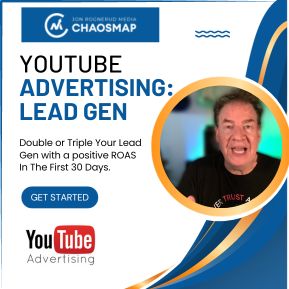The online eCommerce business is very competitive. Visitors will log off of your landing page within 10 seconds (1-3 seconds is the norm in 2018) if you can’t hook them.
Conversion rates tend to vary according to the type of device used. Desktop and laptop computers can have a conversion rate of 4% or higher. Tablets have a 3% conversion rate. Smart device conversion rates are just under 2%.
If you are having an issue with conversion rates, you may need to understand your site’s visitor online habits better.
Establishing your brand, marketing your online presence and retaining visitor traffic is the key to success in a crowded online business market. You must know your audience to expand your business potential.
That can be impossible if visitors don’t stay on your landing page long enough to make purchases. Or to allow you to record business-centric analytics. The bounce rate for many landing pages can be as high as 26% to 70%.
The number of online visitors that you need on a daily, monthly or annual basis to stay solvent varies for each online business. An average conversion rate for many online businesses is around 4%.
So, you want to double that conversion rate to about 8% or higher? You must know the intimate transaction habits of your consumer demographic as it pertains to your website.
A good way to do this is by using technology to subtly follow and market to the online visitors of your website. After they have left your website. It’s called retargeting.
Have you ever noticed an ad for a product from a website you just visited on another site? That is retargeting. It’s been practiced in eCommerce for years. It’s the future of online commerce.
Retargeting can also be the marketing strategy you need to double your conversion rates via Facebook interfacing.
What is Retargeting?
Retargeting is the strategic tracking and data-collecting practice of following your site’s visitors with tracking cookies. A retargeting supplier, or retargeting software, enables tracking cookies to follow your site’s visitors to another website.
On the new site, the online visitor who visited your site will be shown advertising or a banner of the product they perused on your site. Even if they visited your site for a few seconds.
It’s called “retargeting” because online users who visited your site are tracked and targeted again with marketing from your site.You are essentially being given a second chance, and sometimes multiple attempts, to make a first impression.
There should be a strategic marketing rationale behind a retargeting campaign. Like enticing visitors to come back and increase conversion rates. This is where Facebook comes into play.
Why Facebook(tm)?
Facebook has over 2.27 billion monthly users by most conservative estimates. It’s the default social media website people mention if you ask them to name a social media website.
Retargeting campaigns via Facebook are an effective way to engage people as well, since they go to the site to be sociable anyway. You can create a Facebook Advertising account and use Facebook Pixel to launch a retargeting campaign.
*** Want done for you Facebook Ads?
The Facebook Pixel
The Facebook Pixel is like a cookie or an online tracking code. The Facebook pixel is synced to your website and then attached to any visitor to your site.
The aim is to use Facebook pixel as an analytics aggregator. Data about the Facebook users who visit your website is digitally routed to your Facebook Advertising account.
Then, you can use this information to develop a strategic targeting campaign. The bounce demographic from your website may be open to revisiting your website if you retarget them in non-creepy ways. After all, perception is everything.
Facebook Pixel Retargeting Strategies
Make “engagement” the key word in your retargeting strategy. Many people never notice retargeting ads. Some who do may be creeped out by it.
The trick is to not be so overt and direct in your retargeting marketing.Use the information that you have accrued via your Facebook pixel analytics in a way that personalizes your retargeting. Give your retargeting demographic reasons to revisit your website again.
Prioritize different retargeting campaigns for different demographics. Your retargeting efforts should be customized for online visitors who visited once, multiple times, visiting a page without purchase, length of visit and so on.
You can place newsfeed ads on Facebook promoting a sale. Or you can offer a discount to users who revisit your site and submit their email address. Blog posts about your website can be placed in the Facebook feed of retargeted consumers.
About 73% of people abandon their online shopping carts before checkout. Tempt such consumer back to your site with a discount code, advertised on Facebook.
Facebook also has conversion tracking tools that can help you assess the impact of your retargeting campaign. You can even place retargeting ads in Facebook newsfeeds that target your demographic.
Perfect Your Retargeting Strategy
Your success will vary according to your retargeting strategy. Use the information you collect wisely.
Connect with past site visitors in ways that feel less like online stalking and more like a social marketing engagement campaign on Facebook.
Set a realistic monthly visitor goal. Look at your current traffic (web analytics), get the baseline over a 30-60 day period, and pick a new goal number.
See if you can double it.
Reassess your retargeting strategy accordingly thereafter as necessary.
Jon Rognerud and Chaosmap work with Fortune 500 companies, associations and entrepreneurs to create digital traffic strategies that scale up members, customers, leads and sales with profitable returns. Mr. Rognerud wrote a best-selling book (Buy On Amazon), “The Ultimate Guide To Optimizing Your Website” (Entrepreneur). Connect directly here.







